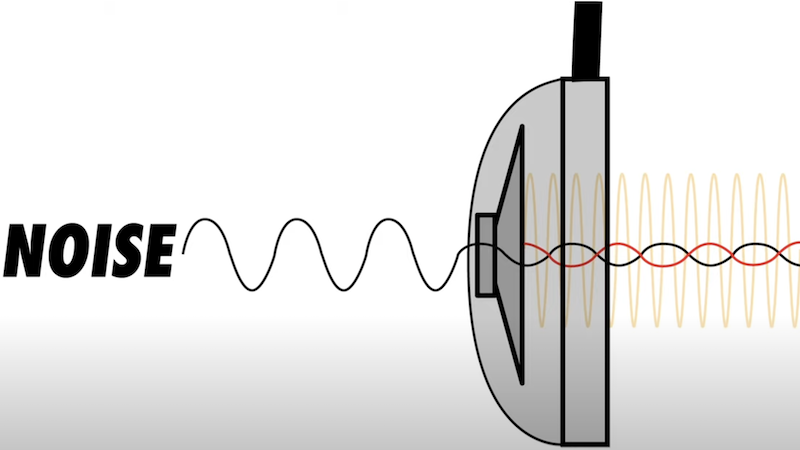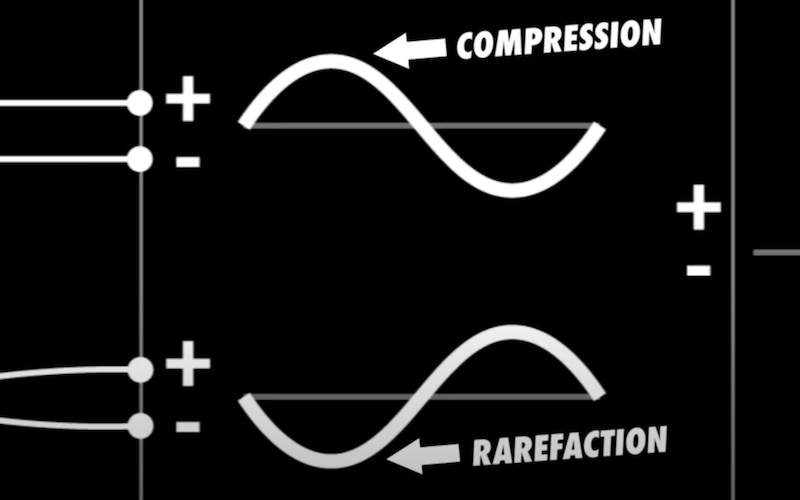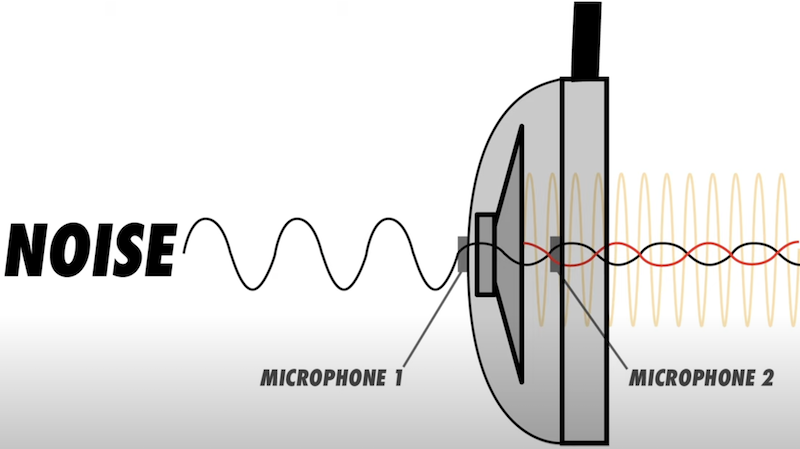
How does noise canceling work? How do noise-canceling headphones work? In this brief article, I’ll quickly answer these questions.
Noise-canceling headphones not only play your music but also create interference that combats the noise around you.

The key principle here is destructive interference. A simple sound wave is a series of positive and negative pressure changes, known as compressions and rarefactions. If I sum two simple sound waves together, I’ll get a larger sound wave. On the flip side, if I reverse the polarity of one of the waves and combine the two waves, they’ll completely cancel each other out. That’s because the compression or high-pressure phase of one wave is met with an equal but opposite rarefaction or low-pressure phase from the other wave.

With active noise-canceling headphones, the noise from your surroundings is captured by a microphone. Then the signal from that mic is inverted and played back through the speakers alongside the music. If done properly, this will result in the environmental noise being canceled leaving only the music.
Limitations of noise-canceling headphones
Just because the principle behind active noise cancelation is simple doesn’t mean it’s easy to implement. First of all, there’s a difference in the noise level between the outside of the headphones and the inside. And this depends on who’s wearing the headphones and how the headphones are positioned on the listener. The noise level must be accurately matched to maximize the cancelation. That’s why engineers often design headphones with 2 microphones: one on the outside to capture the sound and another on the inside to measure the difference in level as accurately as possible.

The internal mic also constantly informs the digital signal processor on the effectiveness of noise canceling.
Another challenge engineers face is getting the correct timing and phase alignment.
If the inverted signal is even slightly shifted in timing, the cancellation won’t be as effective. A complete cancellation only occurs when the level and phase of the 2 opposite sound waves are perfectly aligned.
Regarding timing, there’s a larger margin of error for canceling low frequencies than for canceling high frequencies. For example, while a 1-millisecond shift in time might cause only a small offset at a lower frequency, that same shift in time could cause a much more significant offset at a higher frequency. That’s because the higher frequency wavelengths are much smaller. The lower frequency wavelengths will still be mostly canceled despite the offset, while the higher frequency ones may have been radically misaligned. This is one reason that when you turn on noise-canceling headphones, the low-frequency noise seems to disappear while the high-frequency noise remains.
Alright, that wraps up the article. Now you know how noise canceling works. Thanks for reading. You may also want to know how Bluetooth works.
